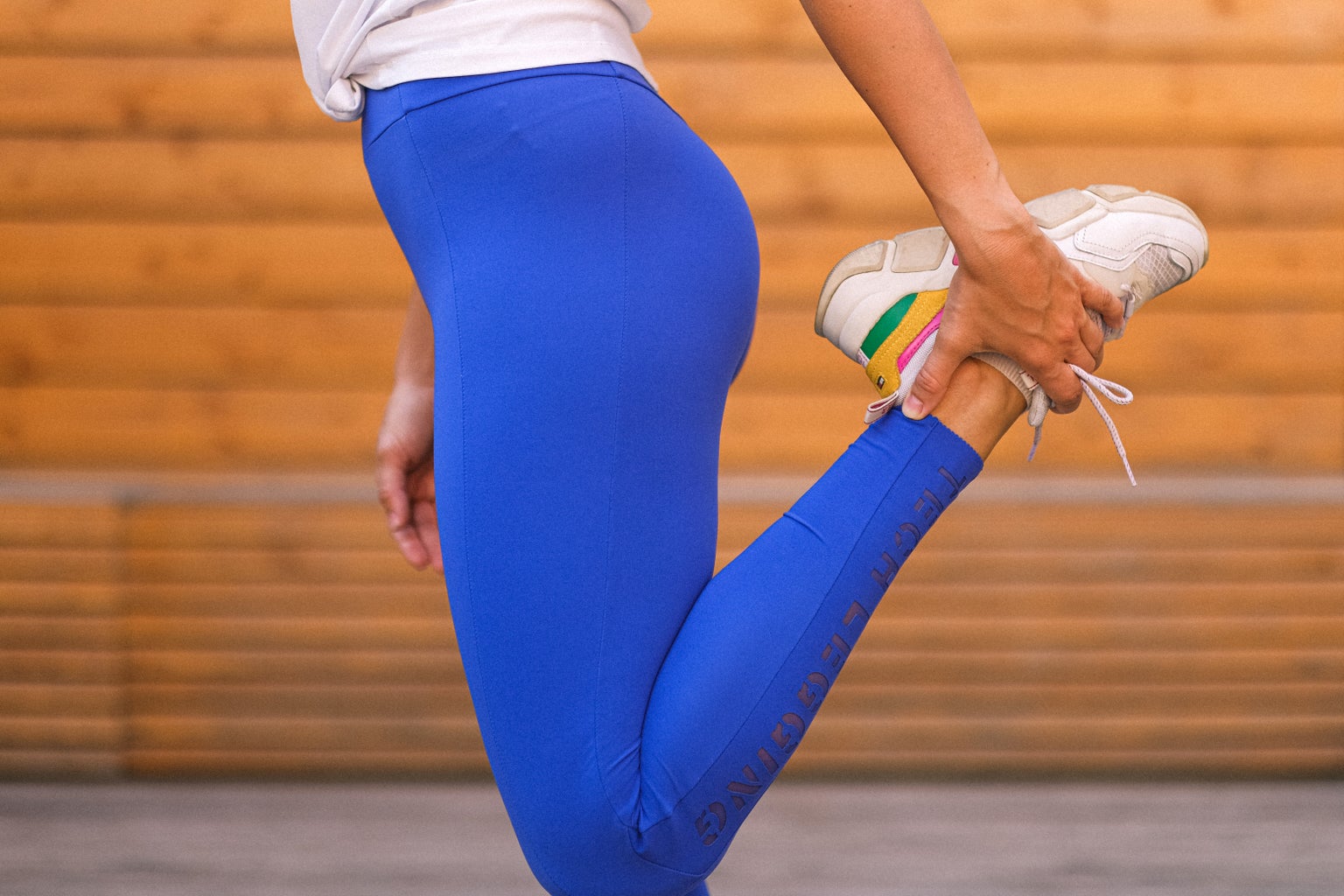
Let’s be honest, we love a good matching activewear set. They’re cute, comfortable and a confidence booster when we’re about to go work our butts off.
Lululemon is notably one of the most popular activewear brands. They’re always coming up with new styles– and hello, Meghan Markle and Lebron James wear them.
Along with Lululemon, you can never go wrong with a classic pair of leggings or a sports bra from Nike or Adidas.
Or can you?
The Fabric-ation
Most brands use synthetic materials made from plastics, oil and chemicals. Polyester is one of the most common materials found in athletic wear, praised for being a “strong and durable,” yet “flexible and breathable” material.
What does that even mean, though?
Polyester is a synthetic, petroleum-derived thermo-plastic fiber. Simply put, it’s a man-made material created from oil, heat and chemicals. According to an online material guide, the creation process starts with manufacturers extracting oil from underground. They then refine– or further process– the oil to make ethylene, a colorless, flammable gas, and terephthalic acid, a flammable substance that takes the form of crystals, powders or resin. The two chemically bond during a heating process to create PET pellets, or polyethylene terephthalate, which are then spun into polyester fibers.
Basically, polyester is a mash-up of melted and re-melted chemicals and plastics that have been spun into a fabric material.
This intricate manufacturing process is what prevents polyester from breaking down, earning its reputation as “durable.”
Machine Wash: Green
A common trend amongst brands right now is to use recycled polyester in their clothing. This is a great avenue for reducing pollution in the sense of keeping clothes and other textile materials from landfills and oceans — a topic for another article — but, honestly, it’s not the solution.
Our clothing shouldn’t be made from these materials in the first place.
Because of this “green” loophole, major brands can market their products as “sustainable” and “eco-friendly.” I’m not saying that using recycled materials is bad, as we should all be doing our best to reuse what we already have. What I am saying is that polyester is not a truly recyclable material.
Have you ever noticed that most athletic clothing is labeled as “sweat-resistant?” That’s partially due to the properties of polyester and the sprays that make athletic wear water and stain-resistant.
Polyester is an absorbent material, making it easier for these sprays to bond to it. But they are filled with chemicals known as PFAS, or forever chemicals. Their chemical bonds are so strong and so resistant that it’s nearly impossible for them to ever break.
All of this means that the leggings you just purchased, the leggings you purchased five years ago and all of their chemicals are going to be on this earth forever.
“Recycled polyester” is a green-washing marketing tactic that confuses the average consumer into thinking we’re doing something good for the planet and ourselves when, in reality, we’re not.
How does this affect women’s health?
Athletic wear is meant to be supportive and worn directly against our skin. When we work out, our pores open up to help our bodies breathe and regulate temperature, AKA sweating.
As this is happening, though, our bodies absorb all of the chemicals and plastics in our clothes. Research shows that these substances have major impacts on the functioning of our bodies, specifically women’s endocrine systems.
The endocrine system is responsible for creating and maintaining hormones. When its functioning process gets disrupted or poisoned, it can lead to issues with our mood, our body’s natural development and our reproductive system.
Because of its “moisture-wicking” or “sweat-resistant” properties, polyester actually traps our body’s sweat into the fabric itself. This creates a perfect breeding ground for bacteria over time.
With leggings and bras worn right against the reproductive organs, the body easily absorbs chemicals, plastics and excess bacteria, which can lead to a variety of health risks ranging from an increase in body odor to cancer.
So what SHOULD you wear?
Opting for materials like certified organic cotton and bamboo are always going to be the better option.
Certified organic cotton legally has to meet certain sustainable standards and regulations. It’s also naturally hypoallergenic and gentle on the skin, making it more comfortable to wear as it lacks toxins and is less likely to cause irritation.
Bamboo has natural antimicrobial properties, making it resistant to bacteria build-up and excessive odor. It’s also regarded as a regenerative crop due to its fast pace of growth, minimal water needs and lack of pesticides.
It’s true that clothing made from these materials can be more expensive. As consumers, though, every dollar we spend sends a message to manufacturers, economists and the global market. Without realizing it, we tell these companies what we’re willing to buy and use every time we shop. Because of that, we have the power to make changes in what’s available and marketed to us.
Some athletic brands to start investing in, that are actually sustainable, eco-friendly and use non-toxic, plant-based, natural materials (you get the vibes), are:





